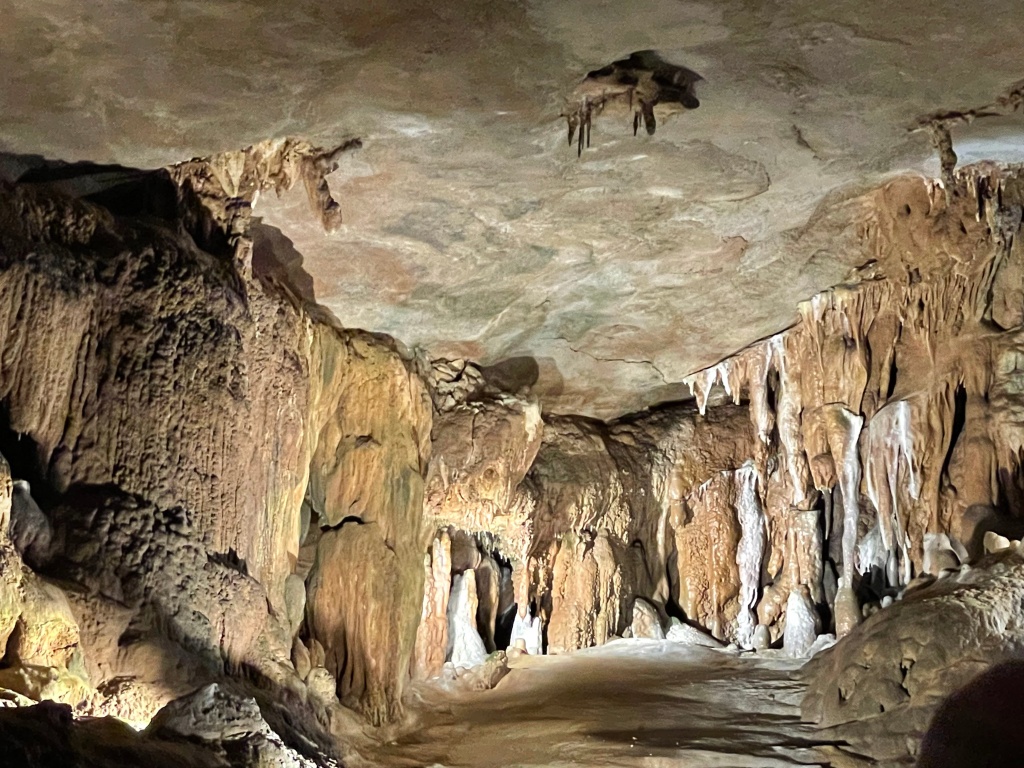Another long day of fun in the Ozarks!
We began by driving to Springfield, MO. It is about a one hour drive, mostly on good divided highways and the Interstate…



We arrived at the most foreign place I have even been in – a Bass Pro Shop. It’s all about hunting and fishing. I know my opinion is not popular, but I’ve never understood killing animals for fun…
This particular Bass Pro Shop had it’s own “Worlds of Wonder” wildlife museum and aquarium – temple of glorifying killing animals for fun. They cloak it all in the name of “Conservation”…

Bass Pro Shops is owned by Johnny Morris and specializes in hunting, fishing, camping, and other related outdoor recreation merchandise. With headquarters in Springfield, Missouri, Bass Pro Shops has a workforce of about 40,000. Bass Pro also owns Cabela’s, another retailer that specializes in similar categories.
We spent most of the day in the wildlife museum and the aquarium. There were various exhibits, stuffed animals, replica animals, and stories of hunting and fishing. I am only posting a few interesting displays…
The Boone and Crockett Club is an American nonprofit organization that advocates fair chase hunting in support of habitat conservation. The club is North America’s oldest wildlife and habitat conservation organization, founded in the United States in 1887 by Theodore Roosevelt. They had a huge collection of “bones and skulls”, which eventually ended up here in this museum…

Mostly heads…

Mostly deer heads…

We took a break for lunch with the club at the restaurant in the Bass Pro Shop…

Again we had some sort of pork, some sort of chicken, green beans and mashed potatoes. They were not as bad as the previous night’s fare…

After lunch we returned to the museum and aquarium. The aquarium did have live exhibits. We particularly enjoyed the rays…

These live crabs looked like they might be delicious…


By mid-afternoon we moved on to our next excursion – The Fantastic Caverns.


The caves were discovered in 1862 by a local hunter and his dog. The dog chased a small animal into a small hole and did not return. The owner crawled in after him and soon realized he could stand… He found the dog, crawled out, and never told anyone about his discovery.
In 1862, during the Civil War (or The War of Northern Aggression, depending on your ancestors…) if an army (any army) discovered a cave it was confiscated, along with the surrounding land. The armies had discovered that a biproduct of bat quango is potassium nitrate, a key ingredient needed to produce gunpowder. Since he did not want to lose his home and his cave, he told no one…
Finally, in 1867, he advertised for people to come explore his cave. He received one answer, and soon 12 locals showed to to tackle the cave – 12 women, aged 12-19. These young women crawled in, explored and documented the caves…
The main selling point of these caves is that you don’t have to walk through them – we get to ride…!


The caves are nowhere as large or as tall as other caverns we have seen…







The 12 young women did write their names on the wall…


This opening to the left is about where the 12 young women entered the caverns in 1867.

It had been a long day, but wait! There’s more!
We returned to the Villa, ate a quick bite, then headed out to the Mansion theater for our next show!




This is The Oakridge Boys!


The core group that would eventually lead to the Oak Ridge Boys was a country group called Wally Fowler and the Georgia Clodhoppers, formed in 1943 in Knoxville, Tennessee. At the time, the quartet was made up of Wally Fowler, Lon “Deacon” Freeman, Curly Kinsey, and Johnny New. This group began recording in 1947. Wally Fowler and the Oak Ridge Quartet were members of the Grand Ole Opry in the 1940s. In 1949, the other three men split from Fowler to form a new group, Curley Kinsey and the Tennessee Ridge Runners, so Fowler hired an existing group, the Calvary Quartet, to reform the Oak Ridge Quartet. Walt Cornell sang baritone for the Oak Ridge Quartet in the early 1950s. In 1961, they changed the group’s name to “the Oak Ridge Boys” because their producer, Bud Praeger, thought “Oak Ridge Quartet” sounded too old-fashioned for their contemporary sound.
They remained a gospel group until the mid-1970s, when they changed their image and concentrated on country music.
The lineup that produced their most well-known country and crossover hits ― such as “Elvira” (1981), “Bobbie Sue” (1982), and “American Made” (1983) ― consists of Duane Allen (lead vocals), Joe Bonsall (tenor), William Lee Golden (baritone), and Richard Sterban (bass). Golden and Allen joined the group in the mid-1960s, and Sterban and Bonsall joined in the early 1970s.

They are really old now – about our age… They put of a great show. The four singers are accompanied by four musicians and a drummer. There were two guitar players, a keyboard player, and a generalist who played steel slide guitar, bass guitar, and violin. The first half of the show was loud Country Rock. After a song or two they all seem to sound alike… After intermission they sang several gospel quartet type songs, which was much more enjoyable… Then they sang their famous “Elvira”…
When the fog machines come on we knew the end was near…

We returned to the Villa and enjoyed a glass of wine… An enjoyable time was had by all…